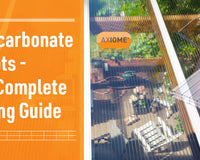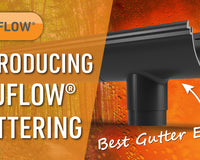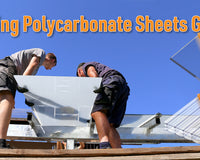Accidents happen during DIY projects, it is unavoidable. Decorating is no different. Therefore, making sure your floors are covered using the correct floor protection while painting or building is so important. Carpet, antique hardwood floors, or favourite pieces of furniture… there is a solution to ensure you have everything ‘covered’ before starting work!
In this article, we will explore the best floor protector options available ranging from low-budget covers to durable waterproof floor protection sheets. This will help you find the ultimate solution for ensuring you keep your floors and furnishings protected during construction or painting.
Best Floor Protection Methods:
- Floor Protection Sheets
- Dust Sheets
- No Protection (Clean as you go)
- Masking Tape
- Carpet Protector Film
Floor Protection Sheets
Good quality floor protection sheets are an excellent option when thinking about protecting your floors while decorating. Durable, long-lasting, and with several other uses once your DIY project is finished – floor protection sheets tick all the boxes.
Unlike dust sheets or tape, which can allow the paint to seep through to the surface below, floor protection sheets are fully waterproof. An essential thing to properly protect a surface. It removes the worry that comes with covering expensive carpets or hardwood floors when painting. This is particularly useful when using gloss or oil-based paint that you may find very difficult to clean and remove. Protect yourself against those all-too-common accidents such as a tipped roller tray or setting down a paint lid the wrong way!
Easy to cut to the shape of the room and into corners, using a sharp knife or scissors, getting full coverage using surface protection sheets is very simple. The rigid nature of these sheets means that you will not have any issues at the edges of the floor or at skirting boards, where you can easily cut a straight edge. What's more, their rigidity means you can also form upstands and corners where this is required by cutting and folding the sheets. This allows you to cover up skirtings or around furniture with ease.
Not only will your surface protection sheet provide you with all the benefits mentioned, but they are also incredibly durable. This is where floor protection sheets stand out against other options which are single-use and can create a lot of waste. Once you have finished your project you can simply fold it up and store it away, ready for the next DIY job around the house. You will find there are many uses for your sheets beyond protecting your floors.
Other uses of floor protection sheets:
- Protect floors, walls and surfaces during house moving
- Protect windows and doors during a renovation
- Pet hygiene – easy clean flooring for pet cages/aviaries etc
- Weed-prevention/ Ground sheets (e.g. for under decking)
- Temporary glazing/privacy screens
- Protecting car boots and back seats when transporting rubbish or going for days
- Templates for cutting Plastic Sheets
Although quite common, it is recommended not to use dark or black plastic floor protection sheets, as these have reduced visibility and can prove a trip hazard. It is always best to use brightly coloured sheets as these have added visibility and will stand out against the surface you are protecting meaning you are far less likely to have gaps between the sheets. There is nothing worse than lifting your floor protectors after completing a job to find you left a gap for dirt and paint.
Dust Sheets
Dust sheets are a popular option due to their inexpensive nature and ease of use. It can be tempting to opt for these without due consideration as the ‘standard’ option. However, it is worth taking the time to look through the pros and cons before making this choice.
While dust sheets are very easy to use and lay down, one of their main pitfalls is the likelihood of paint leaking through the protective floor sheets to the surface below. This can be a disaster, especially if using oil-based or gloss paints that are not as easily cleaned.
Often thrown over furniture and quickly laid down on the floor, it can be difficult to completely cover a surface edge to edge. To properly cover any vertical surfaces, such as skirting boards, you will require other extra protection.
There is also the health and safety aspect to be considered. Dust sheets tend to gather in areas and if being used over a hard or glossy floor surface can move underfoot. This creates a trip hazard which can prove dangerous and leads to accidents.
If used regularly, you may find yourself having to replace your dust sheets often. These cheap floor protection sheets are not the most durable with a tendency to wear and tear very quickly. Despite initially seeming like a low-cost option they often end up costing more over time.
No protection (Clean as you go)
You can of course leave your floors and furnishings unprotected while painting. This may be a suitable option if doing a small touch-up job, or if working in a room where flooring is to be put down after painting is complete. While this is an option for projects on your property, professionals working on a job for a client should use some kind of surface protection sheet to avoid expensive damages.
Cleaning as you go does however present some issues that would not be seen if using cover protection, especially plastic floor protectors. The risk of spillage is much higher, and any spills would need to be seen and cleaned up immediately. Any spills left can be harder to clean up once dried.
Although a seemingly easy process, cleaning and you go tends to disrupt the progress of your job as you have to constantly stop to clean up. When doing a larger job this can prove quite inefficient!
If you have hardwood flooring or any antique furniture that you wish to keep pristine then this method isn’t advised. Certain oil-based paints can permanently stain antique hardwood and it can be almost impossible to remove once dry without damaging the surface. Waterproof floor protection sheets are a must when using oil-based paints.
Masking Tape
One of the most used protections while painting is of course masking tape. This low-cost option is very popular amongst DIYers and pros alike. If working in small areas, such as around light fittings or electrical sockets, masking tape is a great option.
Very easy to cut and work around corners, it is very useful for skirting boards or other smaller areas. However, using tape does make covering larger areas quite a labour-intensive and timely task – especially when compared with the ease at which dust sheets or temporary floor protection sheets can be quickly put down.
You may also encounter some issues with the tape becoming unstuck or not sticking down easily. This can be caused by things like sawdust affecting the adhesive, or if the tape gets wet when put in place. As masking tape is not 100% waterproof, you may also find issues with paint seeping through to the surface below which can cause damage or affect the overall finish of your work.
It is very important to ensure that if using tape, you do not leave this stuck to a newly painted edge long enough for the paint to dry. When lifting the tape, a good chunk of the paint will come along with it! In turn, requiring the time-consuming task of touching up corners and edges where the tape has lifted.
Carpet Protector Film
Similarly to Dust sheets, carpet protector film is a popular option due mainly to its ease of use. It is very quick to install and roll out over your floor. If you are working in a room with hardwood floors and with no obstructions or awkward shapes to cover, then carpet protection film is a good option.
One big disadvantage of the protection film is the lack of impact resistance that the film provides to the below surface. Unlike heavy-duty floor protection sheets, which will protect against heavy drops or ladders, floor protection film will not provide the same resistance. Often the film can be pierced by simply using a ladder on it! This can cause chips or scratches on your hard floor or tiles below which can be a very expensive fix or worse create holes for dirt and paint to get through.
Unlike other more durable options, the self-adhesive backing means you will only get one use out of your floor protection film. This can lead to a lot of waste and expense that could be avoided by using a reusable option. Additionally, being single-use means that once the film is down, you will be unable to move it around the room or change position once you have started.
It is key you seek out a low-tack option if working on hardwood or antique flooring, as otherwise the adhesive backing can also leave residue on the surface once removed. Carpet Protection Film does not work on all flooring surfaces, such as high-gloss tiles, due to the adhesive not taking to the surface so always check before using.
What is the Best Floor Protection Method?
Overall, the best way to cover and protect your floors while painting or building is by using a waterproof floor protection sheet. These will not only protect your floors and furnishings from any spills or dirt while completing your project, but their durability means you can reuse them time and time again around your property.
There are of course other options, discussed above, to suit different budgets and projects. The below table breaks down the pros and cons of each of the floor projection options which should allow you to make an informed decision when considering how best to save your carpets from a wayward drip of gloss!
|
Protection Method |
Easy to use? |
Waterproof? |
Durable? |
Reusable? |
Overall Protection? |
|
Floor Protection Sheets |
**** |
***** |
***** |
***** |
5/5 |
|
Dust Sheets |
*** |
** |
*** |
**** |
3/5 |
|
No protection |
***** |
* |
* |
* |
1/5 |
|
Masking tape |
*** |
** |
* |
* |
3/5 |
|
Carpet Protector Film |
*** |
**** |
* |
* |
2/5 |
Cleaning Floor Tips
Unfortunately, accidents can still happen regardless of the protections that you have put in place. In the next section, we will address some of the key questions to consider when cleaning any paint spills.
What is the best way to clean paint off floors?
This depends heavily on the type of flooring from which you are cleaning the paint, as each surface will react differently when it comes into contact.
For most spills, it is important to act swiftly before the paint has a chance to dry. As most water-based paints are water-soluble when wet, you should be able to rely on standard cleaning products and solutions to treat the spill before it has a chance to dry.
TOP TIP: Before attempting to apply any chemicals or cleaning solutions to try and clean the spill, it is always best to try the product on a small inconspicuous area of the floor in case it does not react as expected and makes the issue worse. If unsure, always check with the flooring manufacturer before using a specific cleaning method.
Are water-based paints easier to clean compared to oil-based paints?
Yes, water-based paints are much easier to clean than oil-based paints or gloss paints. When wet, most water-based paints will come off with standard cleaning products and a bit of elbow grease.
It is a different story, however, when using oil-based and gloss paints. It is very important to try and avoid any accidents when using these paints, as they can be a disaster for your flooring surfaces and furniture. Often spilling these types of paints can lead to permanent damage meaning items have to ultimately be replaced or repaired.
If you take the precautions outlined previously this risk can be avoided by taking the time to ensure that you have sufficient waterproof floor protection in place.
Need Further Help with choosing your Floor Protection?
If you are needing help choosing the right floor protection sheets please get in touch. Our Team will be happy to assist on our Live Chat or you can email shop@clearamber.com where we can provide you with all the advice and support you require for your project.
Place Your Order Today – Same Day Despatch, Free Returns & 5 Star Service!











